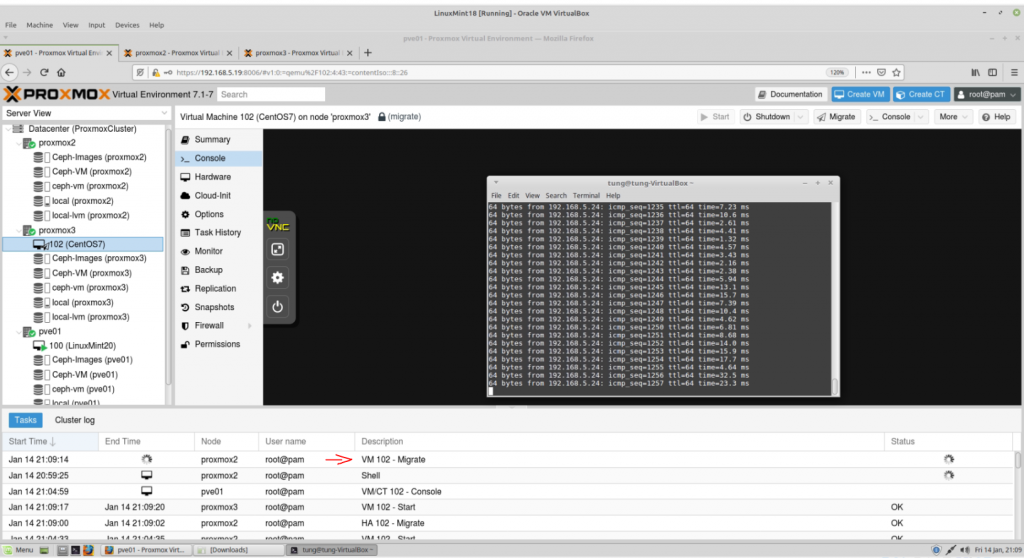Ceph is an open-source distributed software solution. It is designed to serve block, file, and object workloads for a cluster system. There are a lot of advantages when using Ceph. Ceph supports distributed object storage on multiple cluster nodes, provides redundancy between cluster nodes and is able to scale out cluster storage nodes with Ceph.
Ceph is able to run on commodity hardware without vendor lock-in. Moreover, Ceph is also a unified storage infrastructure that supports storage clusters that may grow or shrink and allows to add and remove hardware while the Ceph cluster is online.
This lab below is used to deploy three Proxmox nodes on the Ceph clsuter.

Add a new second hard drive on Proxmox1, Proxmox2, and Proxmox3 nodes.
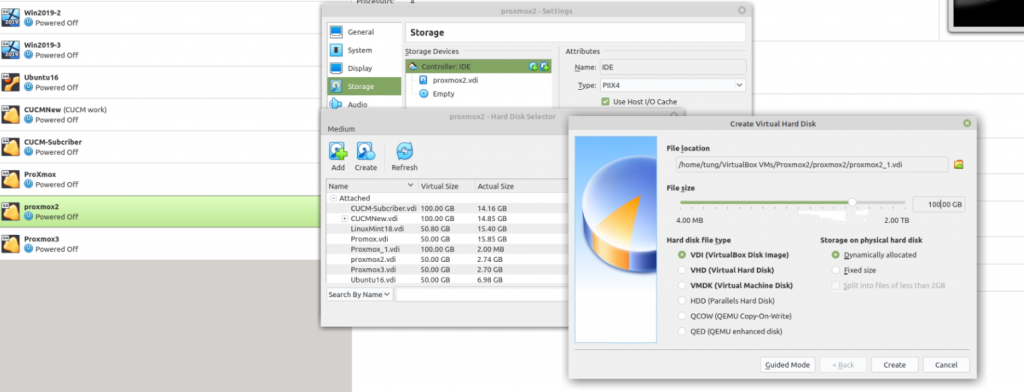
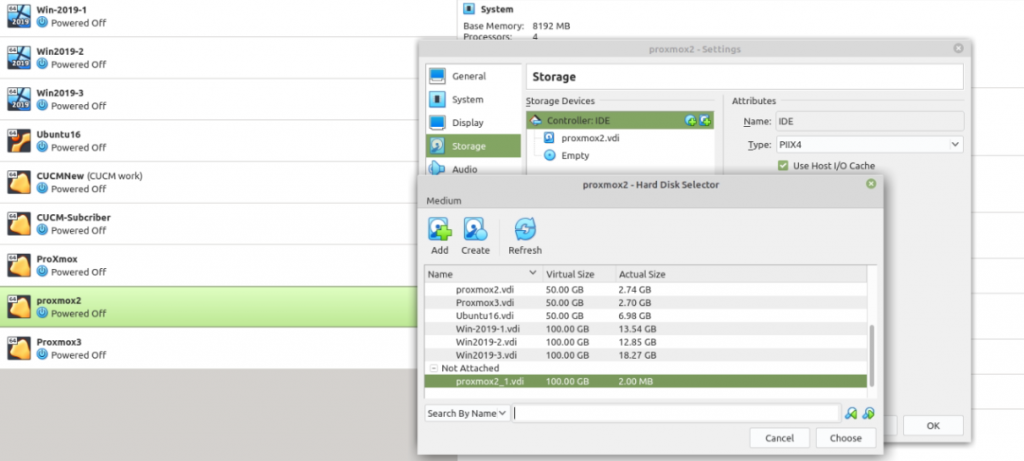
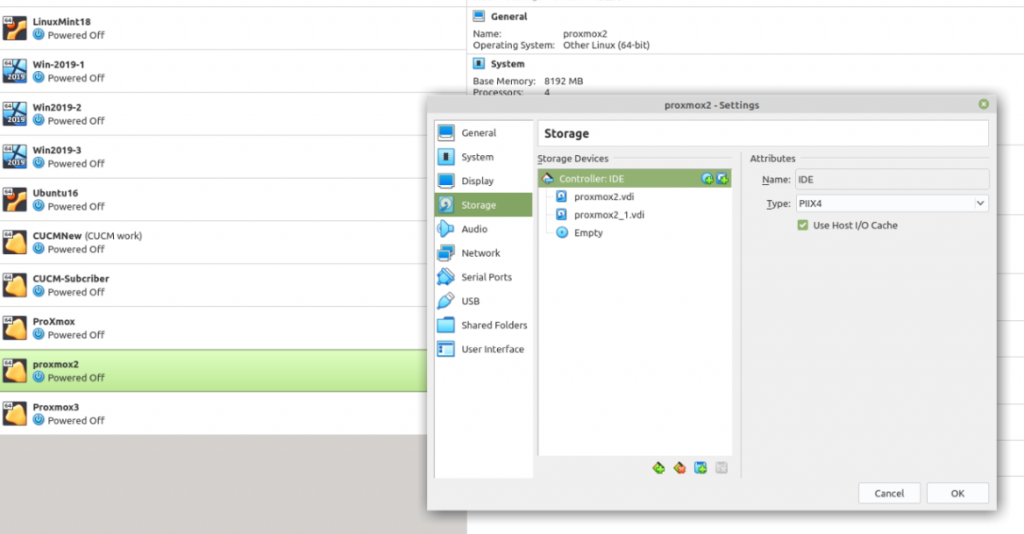
Install Ceph cluster on node 1.
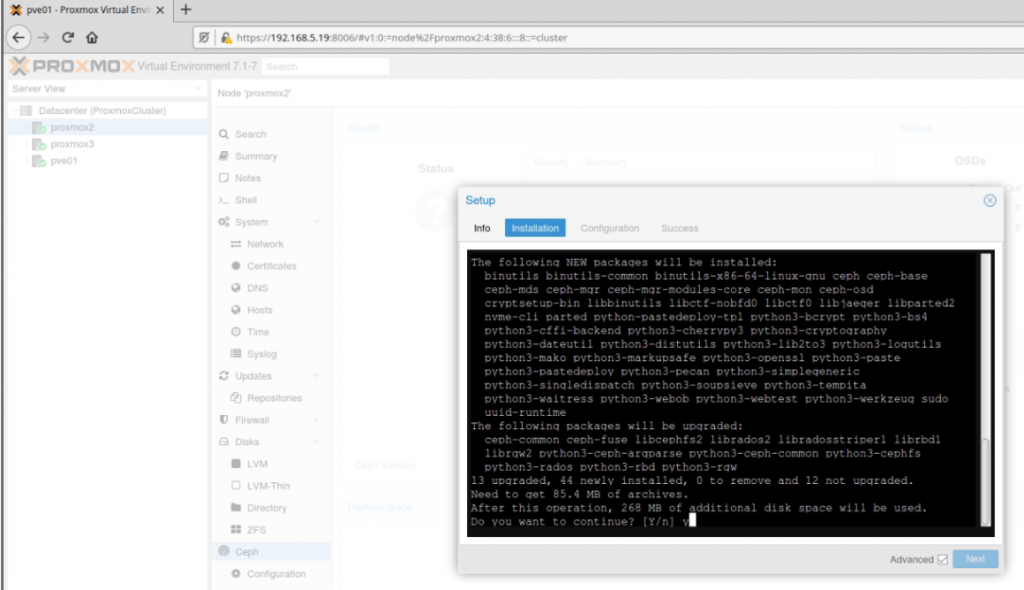
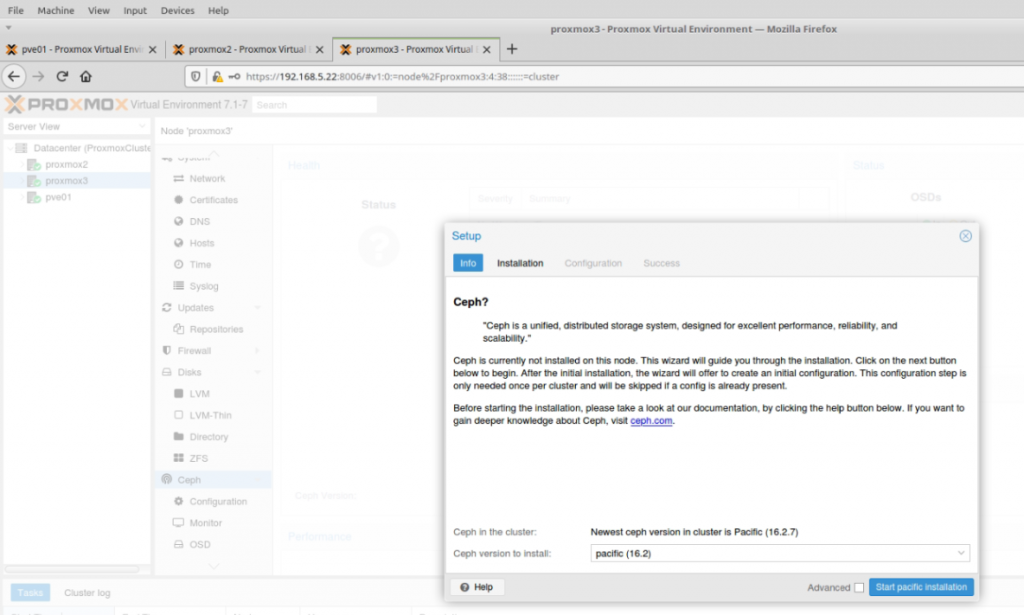
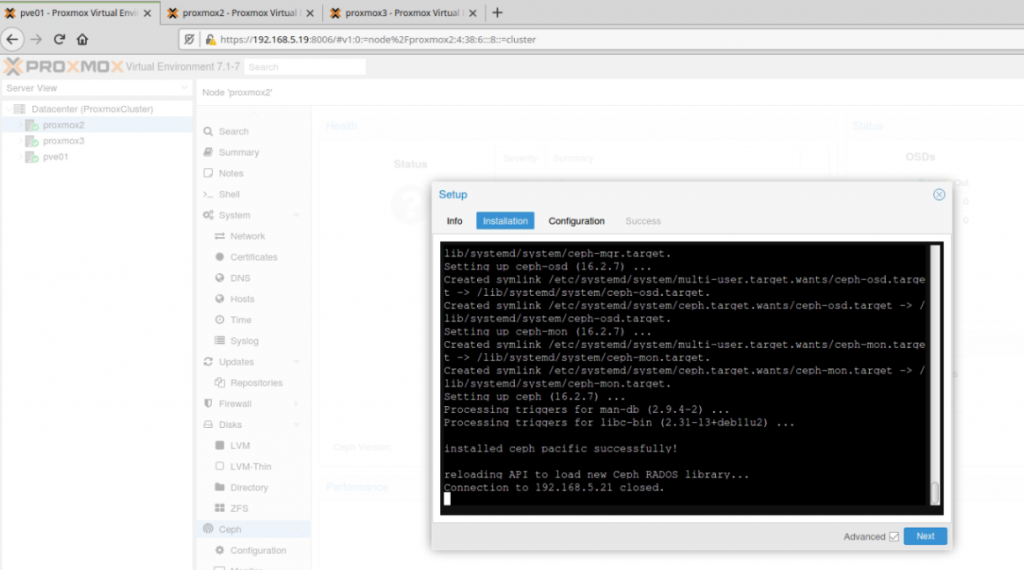
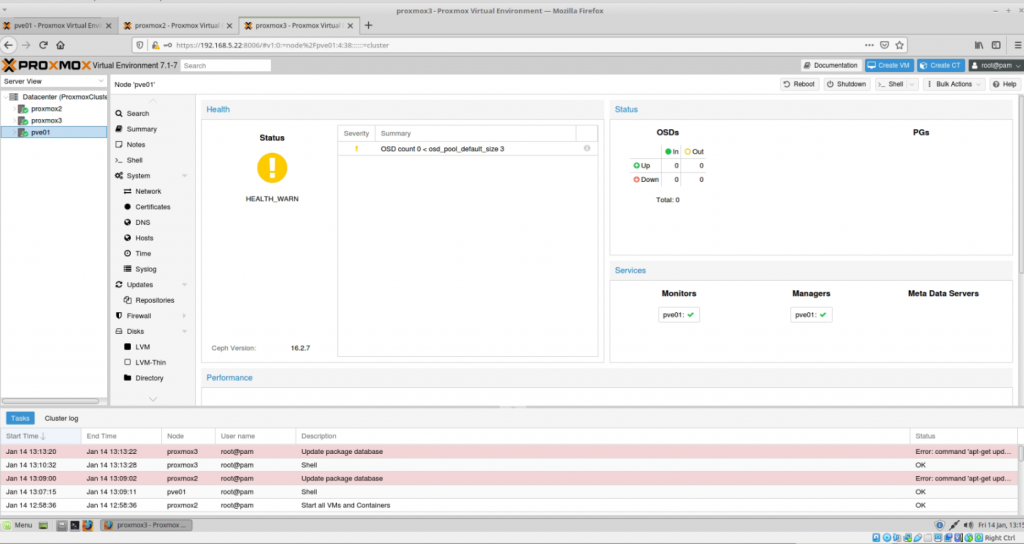
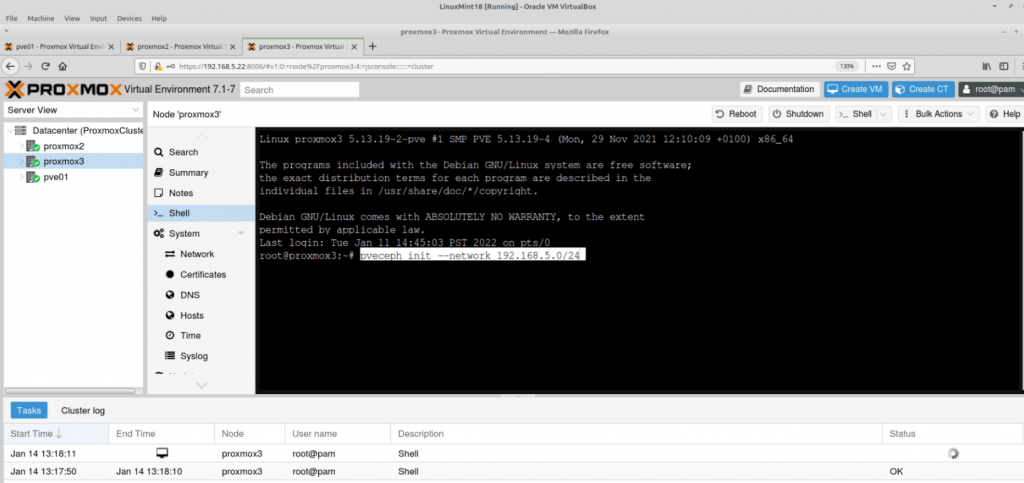
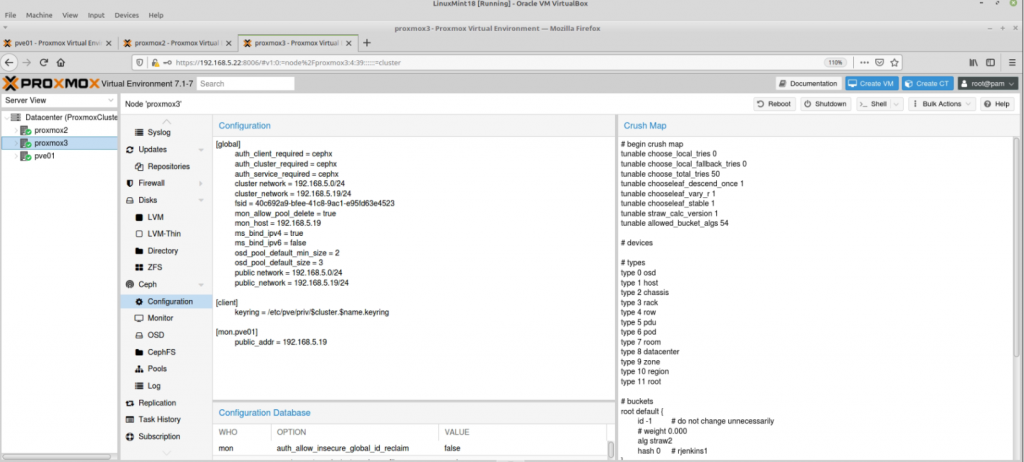
Create an OSD on Proxmox node 1, node 2 and node 3.
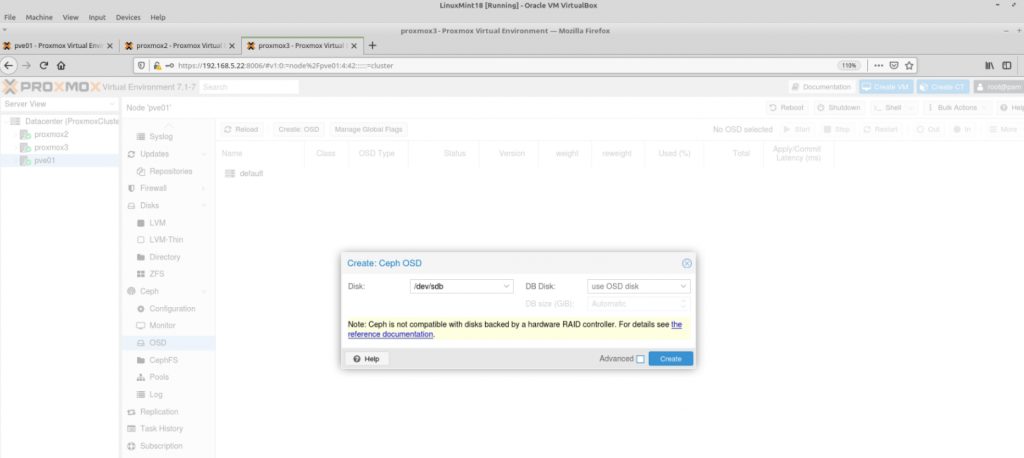
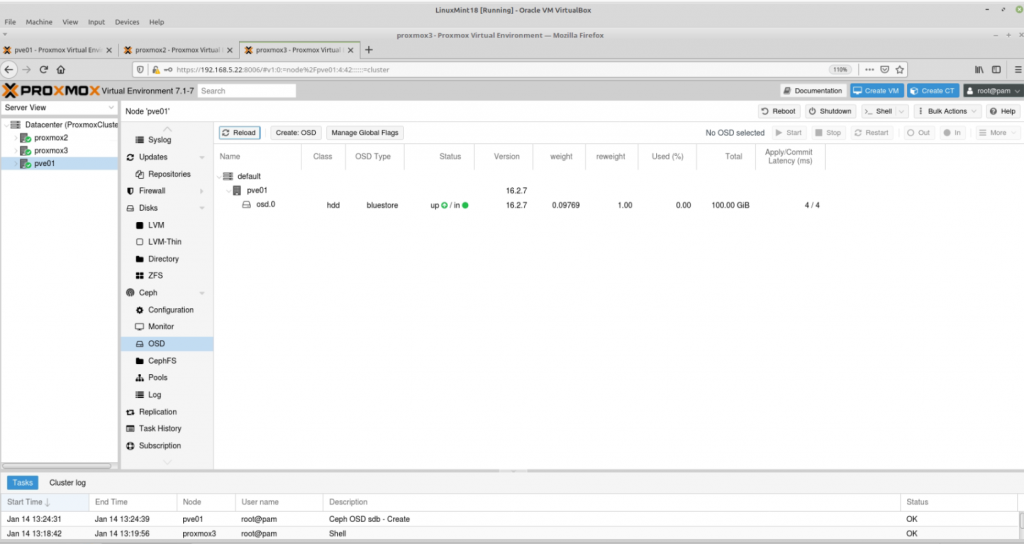

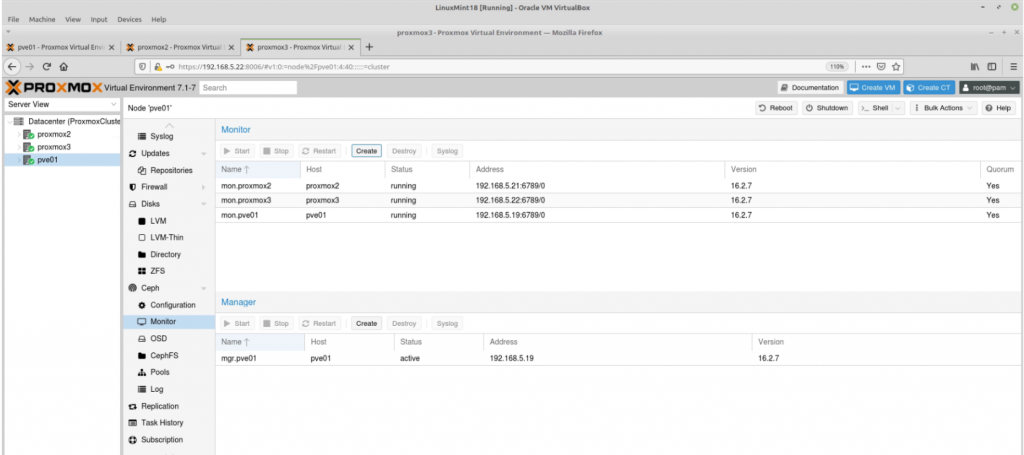
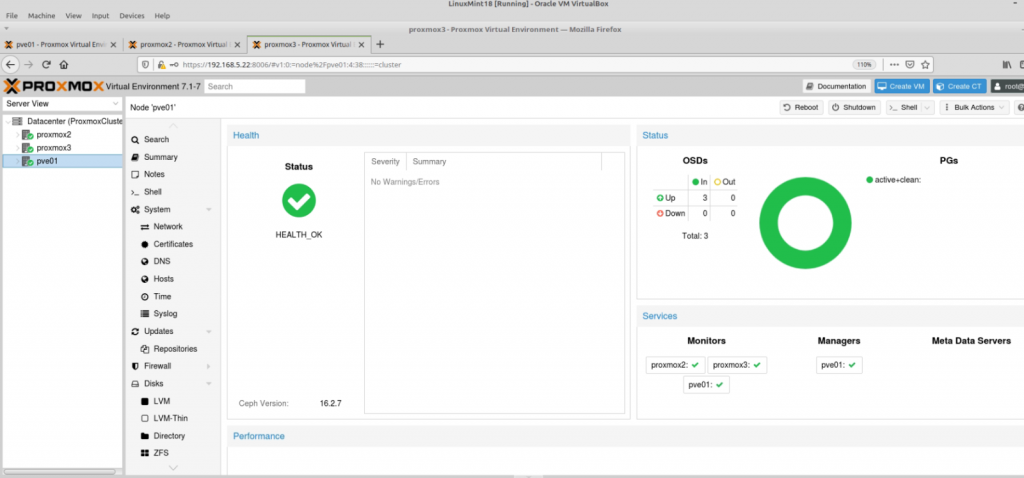
Create Ceph Pool on Ceph storage.
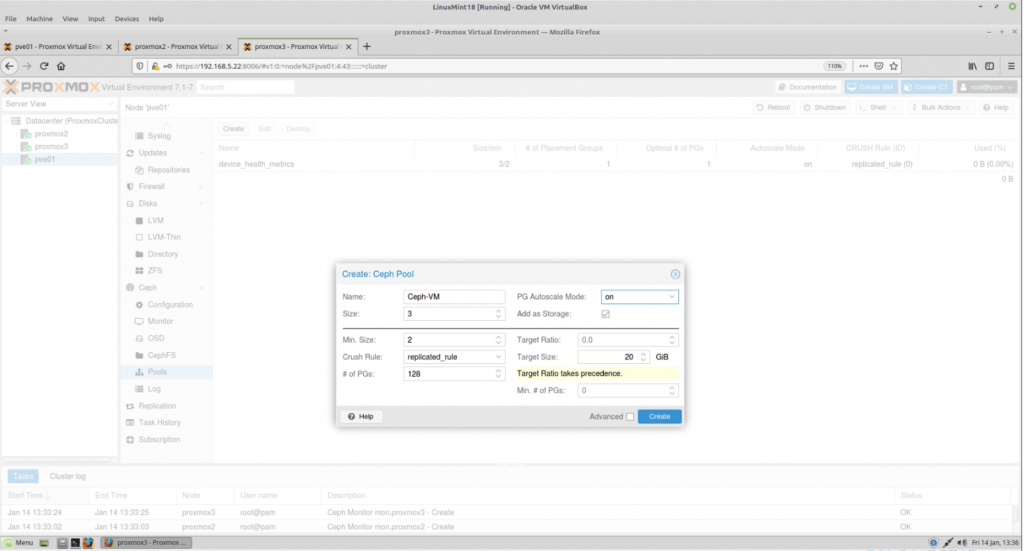
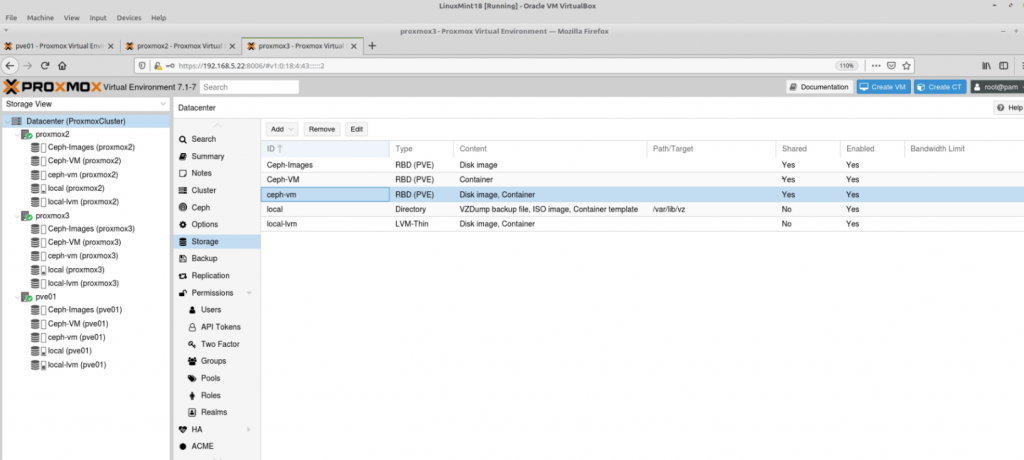
Create a new Linux VM on Ceph.
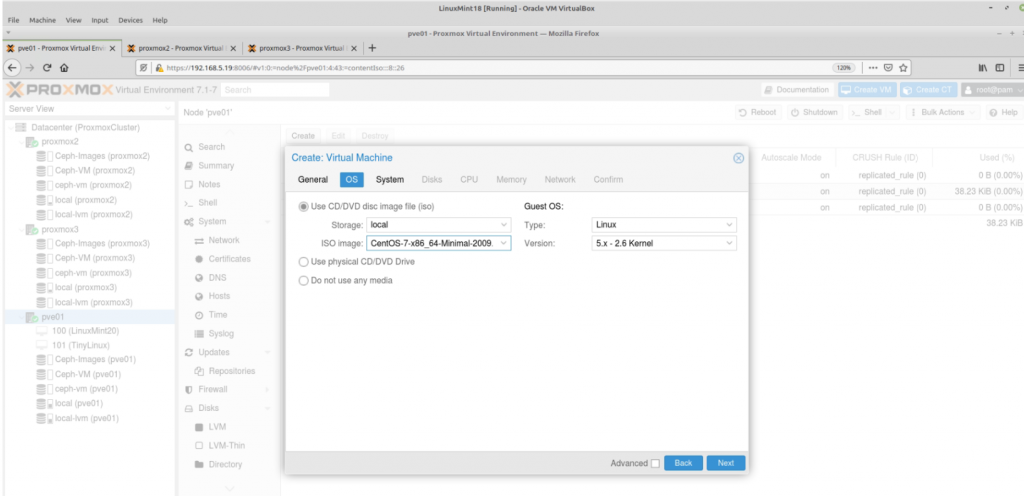
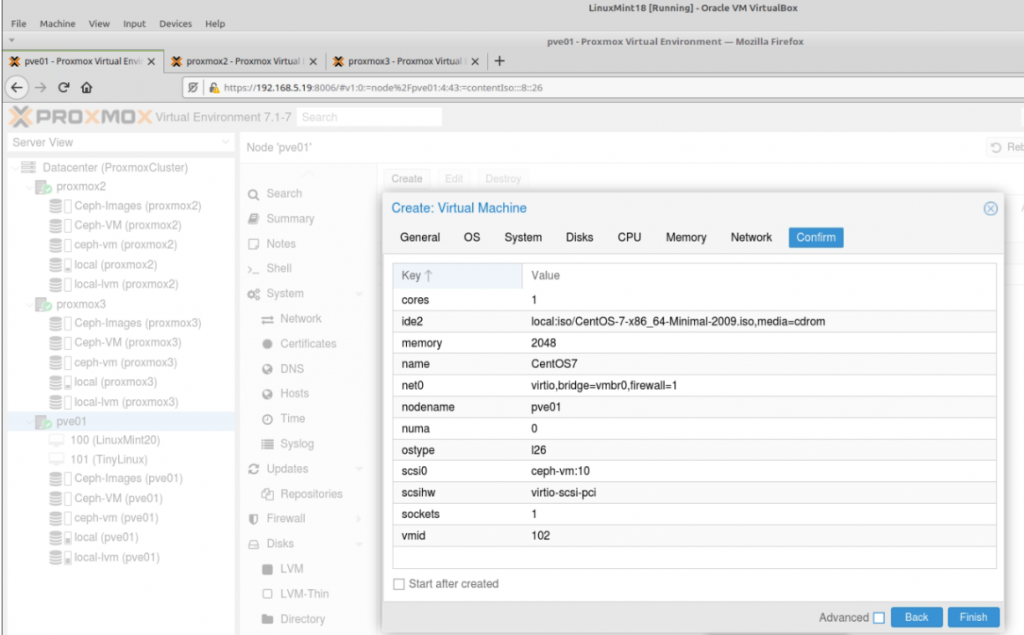
Add this machine to the HA Ceph.
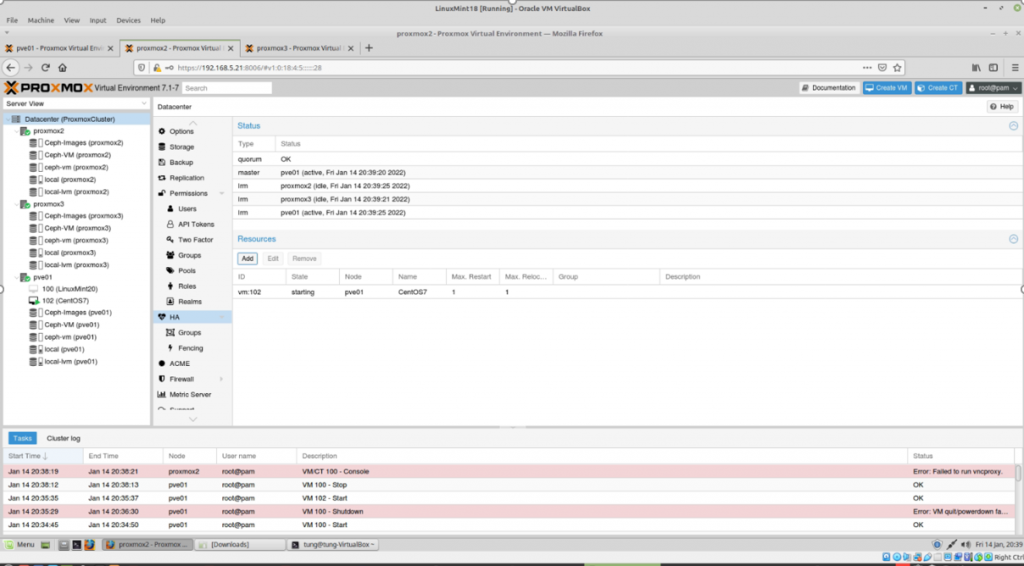
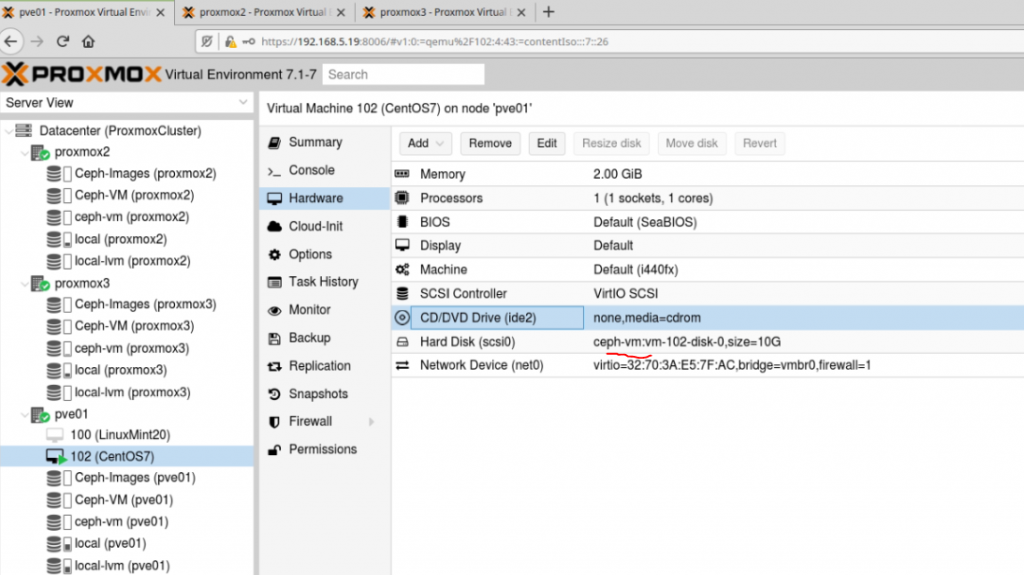
Hard turn off the Proxmox node1.
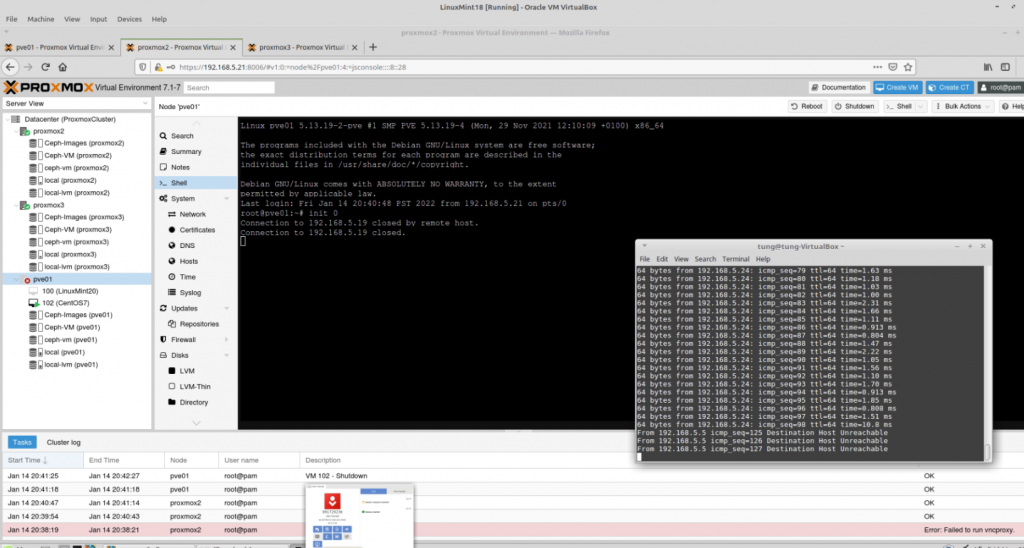
Linux VM has been migrated to Proxmox node2 with a couple of minutes of downtime.
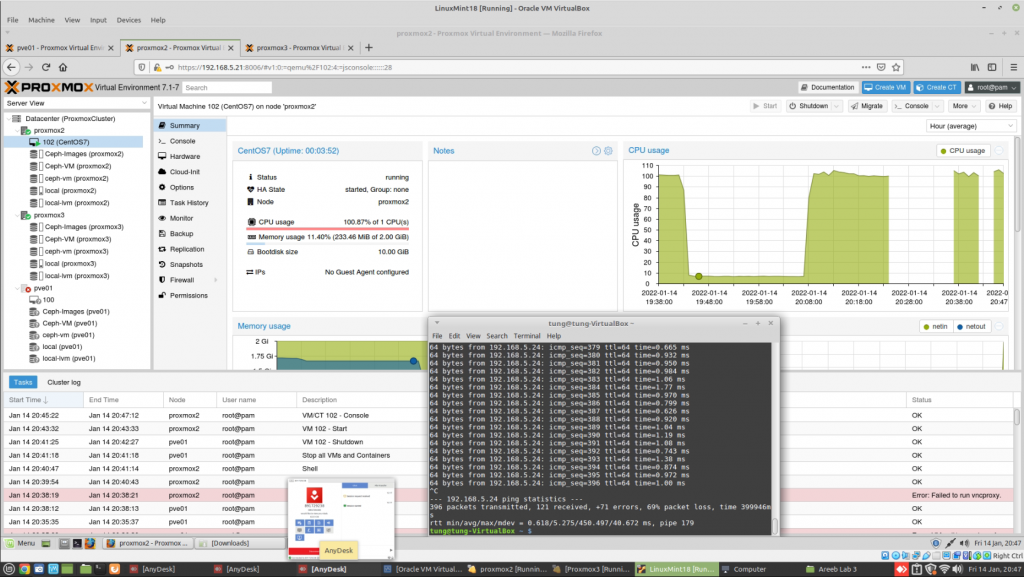
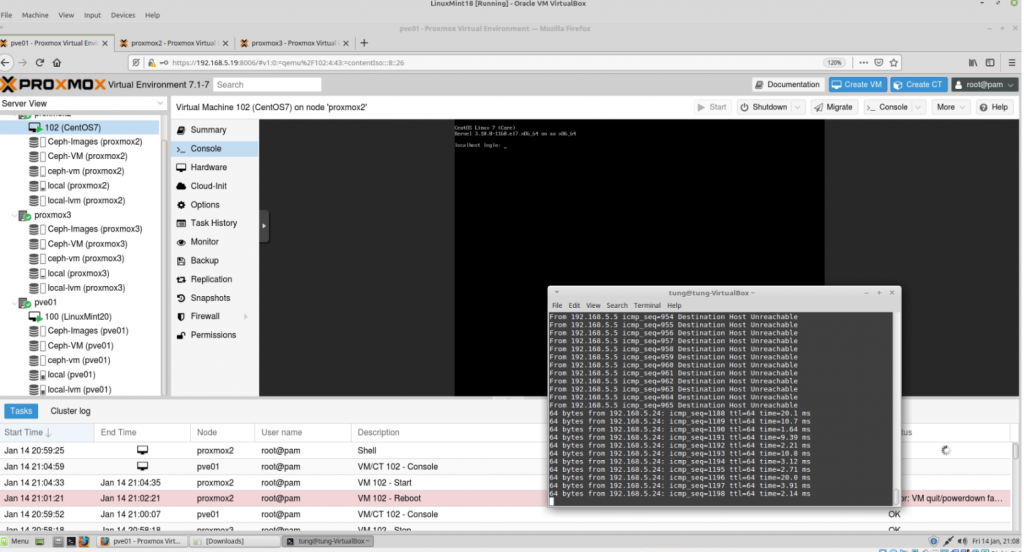
Doing live migration the VM2 on Proxmox node 2 to node 3.
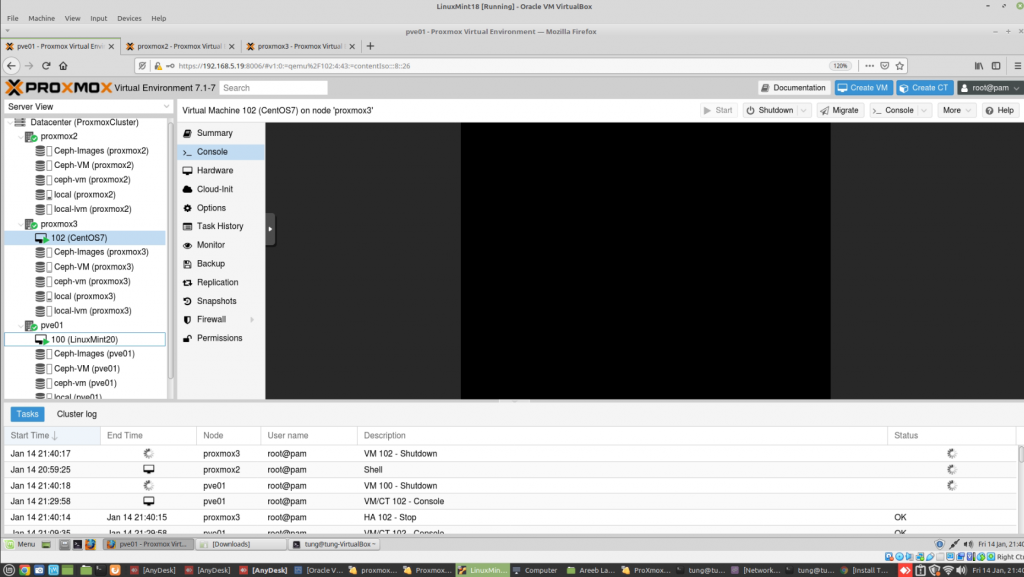
It is interesting to see there is no downtime when doing live migration VM2 on Proxmox node 2 to node 3 in the Ceph cluster.
